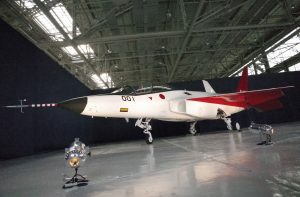According to Bradley Perrett at Aviation Week, Japan may take a buffet approach to its next fighter. Japan seeks a larger, longer-ranged fighter than any European partner wants to produce, and the United States does not currently have any projects in the works that would make for useful collaboration. Japan also wants to take the lead in developing the project, something that it has not done for a very long time.
Perrett mentions the British Tempest program as a potential partner. This program expects to generate a variety of technologies in association with numerous firms that could be integrated with different engines and airframes. Collaboration would appeal to Japan, saving money and allowing the Japanese to develop a larger fighter capable of operating at the extreme ranges required for service in the Pacific. Japan could also partner with France and Germany’s Future Combat Air System project in order to acquire and integrate additional technologies.
It is unclear what the timeline for any of these projects will be. Workforce concerns (primarily training and retention of young engineers) have put Japan on a more accelerated path than the United Kingdom might be comfortable with. Both countries, however, are looking to begin fielding a new fighter in the 2030s.
At the moment, Japan has bought deeply into the United States’ F-35 project, intending to acquire both the F-35A and F-35B models. Japan’s legacy fleet is also built largely around U.S. technologies, albeit with joint production. But the future of U.S. fighter exports in unclear, especially given prospective changes in how the United States is thinking about production. It’s also possible that Japan is thinking in terms of the export market. Under Abe, Japan has begun to considerably increase its arms exports, and it may want to escape the thumb of U.S. export controls to the greatest extent possible. Of course, collaboration with the U.K. or the EU consortium would also spark export control concerns.
More broadly, the Japanese decision in this case may herald the end of a particularly global approach to fighter design and development. While the F-35 project is unique in terms of its global reach, it certainly built upon patterns of production and acquisition developed for the F-15, F-16, and other fourth generation fighter aircraft. In the future, it appears that rather than rely on a single platform modified for particularist tastes, the aviation industry in the most advanced countries will produce platforms that share components, but not an airframe. The success of these efforts likely hinge on the success of the technological approach favored, in the United States, by Will Roper. Whether this will work remains to be seen, and likely depends to great extent on how well lead firms perform as systems aggregators.

































